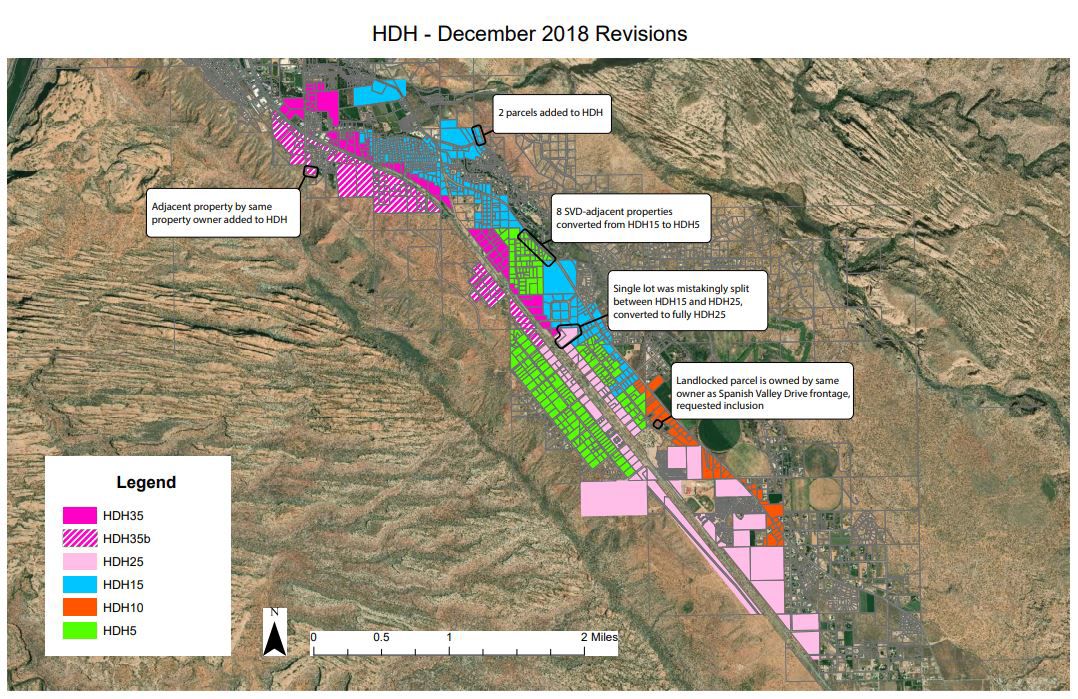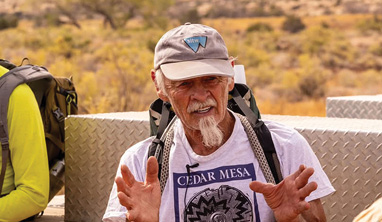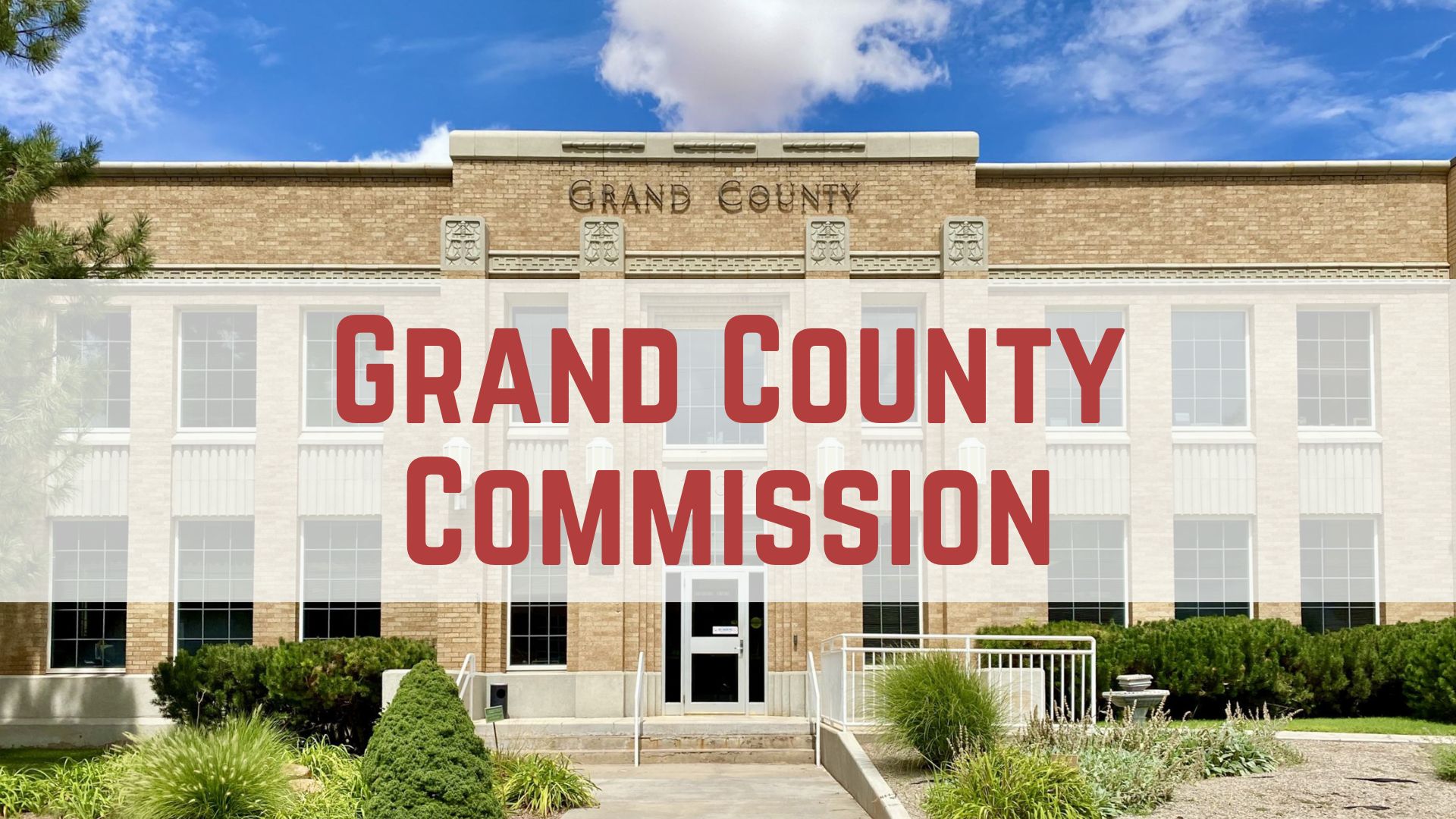Some information may be outdated.
Lower housing densities will remain in place for now throughout Spanish Valley’s unincorporated neighborhoods, to the relief of some county residents, but to the dismay of others.
The Grand County Council rejected a proposal this week that could have spurred the growth of affordable housing by allowing developers to build more resident-occupied units per acre in the valley. Council members Rory Paxman and Jaylyn Hawks were absent from the Dec. 18 meeting.
The county’s community and economic development department had been working on the plan for more than two years before it presented its final amendments to the council this week.
County planning commissioners previously recommended approval of an ordinance that would have amended the county’s land-use code to create a high-density housing overlay zone. A series of related public hearings and workshops followed that board’s vote in late September, and based on the feedback they received throughout the process, department staffers subsequently revised that proposal.
“I feel very strongly that that community input has made its way into the proposed ordinance,” Grand County Community and Economic Development Director Zacharia Levine told the council. “Even if someone is not 100 percent satisfied with it — meaning it doesn’t go far enough, or it goes way too far — I think that what we’ve captured is a very balanced approach, and a lot of changes along the way do reflect the input that we’ve received, and our staff feels pretty good about that.”
Among other things, the plan would have established six different overlay zoning districts in unincorporated Spanish Valley, where maximum housing densities would have ranged from a low of five units per acre to a high of 35 units per acre.
Grand County Council member Evan Clapper made a motion on Dec. 18 to approve the final proposal, but with little discussion among council members, his motion died when no one seconded it.
Grand County Council chair Mary McGann, who was not allowed as chair to second Clapper’s motion, nonetheless voiced her support for the proposal.
She noted that council members directed the department several years ago to find incentives that could help address the community’s ongoing affordable housing woes.
“That is what they did, and they’ve spent two years — long years … more than two years — working on this,” McGann said.
While county officials have frequently heard criticisms from opponents of greater housing densities, McGann suggested that those commenters are not necessarily representative of the majority viewpoint.
“There are just as many people who are looking forward to this opportunity to create and develop affordable housing,” she said. “And I feel that it is shallow words when we as elected officials say, ‘We are concerned and we want to do something, and we want to help with the affordable housing issue in this community,’ and yet we don’t … have our opportunity to move this forward, I think is a shame.”
McGann’s comments led Grand County Council vice chair Curtis Wells to call for a point of order, telling her that she must follow the procedural rules that govern council meetings.
“I’m not sure that Roberts Rules (of Order) allows for a lecture when there’s a motion on the floor,” he said. “If there’s a failure to a second, the rules of this chamber do not allow for you to go on and lecture the other members of this body at will.”
McGann, in turn, said she thinks Wells is “the pot calling the kettle black.”
But Wells called for the meeting to be brought back on track, stating that “the rules are the rules.”
“So … do we follow the rules, or not?” he asked.
PROPOSAL DREW MIXED REACTIONS FROM LOCAL RESIDENTS
A draft version of the proposal says the regulations aimed to encourage the development of new housing units by helping the public and private sectors make the provision of those units economically viable. At the same time, the regulations would have offered assurances that those units would maintain a “high degree of quality,” and would remain accessible to local residents and the county’s workforce, as opposed to tourists and nonresidents.
County officials received dozens of written public comments in response to the plan.
Some residents like Sarah LaBrec raised concerns about the potential impacts they feared it could have on the valley’s rural character.
“I know that we have a housing problem and I know that everyone says ‘not in my back yard’ but please keep Spanish Valley ‘rural’ and look for solutions in the ‘urban area’ — in Moab, which is already a ‘city,’” LaBrec said in a written statement to the county. “It isn’t just the housing, it is the commuting, noise and pollution resulting from the travel into town that will be an issue.”
Others, like Catherine Shank, questioned the possible strains that higher housing densities could place on water resources and local infrastructure.
Shank, for one, voiced concerns about potential disruptions to existing neighborhoods from additional noise, safety concerns, traffic and potential conflicts between neighbors, among other issues.
“Ultimately this would significantly affect the rural character of my neighborhood and my home,” she said in a written statement to the county.
Since the county’s initial high-density proposal emerged, Shank noted, several affordable housing projects have been put on the table.
“It seems that this noble intent to create affordable housing may not be as essential as when it was originally created with these other projects on the (rise),” she wrote. “It seems that the focus has changed to increasing the development in Moab. The idea that more building more homes will bring down the real estate costs making Moab more affordable is unlikely. Have anyone of you seen this to be true anywhere??”
On the other side of the spectrum, county officials heard from affordable housing advocates like Courtney Kizer and Audrey Graham, who voiced strong support for the proposal.
Kizer, a local architect who also serves on the Housing Authority of Southeastern Utah’s (HASU’S) governing board, said she has a “strong and vested interest” in creating residential homes in Grand County.
“My friends, my colleagues and I all struggle with the high cost of housing, barriers to ownership and low inventory that plagues this region,” she wrote in a statement to county officials. “As an architect, I have an opportunity to create a housing project for the benefit of our local citizens, but I need your help to pave a pathway to make that dream a reality.”
Kizer said that she and her family are under contract to buy a 1.4-acre piece of property in the 1100 block of Murphy Lane that is currently zoned Rural Residential. The family wanted to be among the first people to apply for a higher-density project, assuming that the council had approved the overlay ordinance.
“Our hope is to use the proposed (overlay zone) incentive to create a small housing project tailored to the needs of our long-term residents,” Kizer wrote.
Speaking as a private citizen, former Grand County Council member Graham said she believes that the county’s investment in “skilled and knowledgeable” staff to address the affordable housing problem has paid huge dividends.
“(We) are FINALLY ready to move forward from endless meetings and hand-wringing, to actual solutions,” she wrote.
Graham said she’s aware that council members are feeling the pressure from concerned individuals to water down some of the details. Yet although some tweaks will be needed, she said, she fully supports the gist of the overlay ordinance, as well as an essential workforce housing ordinance.
HASU and local nonprofit organizations, such as the Moab Area Community Land Trust, also stand ready to partner with the county, she said, to ensure that it does not need to “reinvent the wheel” or become a housing agency in order for the plans to succeed.
“These solutions will also allow private developers to provide dedicated lower cost units for our workforce, with accountability built in,” Graham wrote.
Department says plan could have spurred affordable housing
“Even if someone is not 100 percent satisfied with it — meaning it doesn’t go far enough, or it goes way too far — I think that what we’ve captured is a very balanced approach…”
Appreciate the coverage? Help keep local news alive.
Chip in to support the Moab Sun News.





